Be it the king, queen, or the bishop, all chess pieces and pawns move diagonally or in a straight line. But, a knight is different from all. It’s unique and powerful.
Because it’s the only piece on the chessboard that can move both horizontally and vertically in one go.
Now, the question is: how does the Knight move after all? To find the answer to how does a knight move in chess, read ahead.
Knight Moves in Chess
All You Need to Know Did you know? A knight is the only chess piece whose movement has remained unchanged since the beginning of chess.
In other words, a knight had the same movement even in the game of Chaturanga–the ancestor of chess.
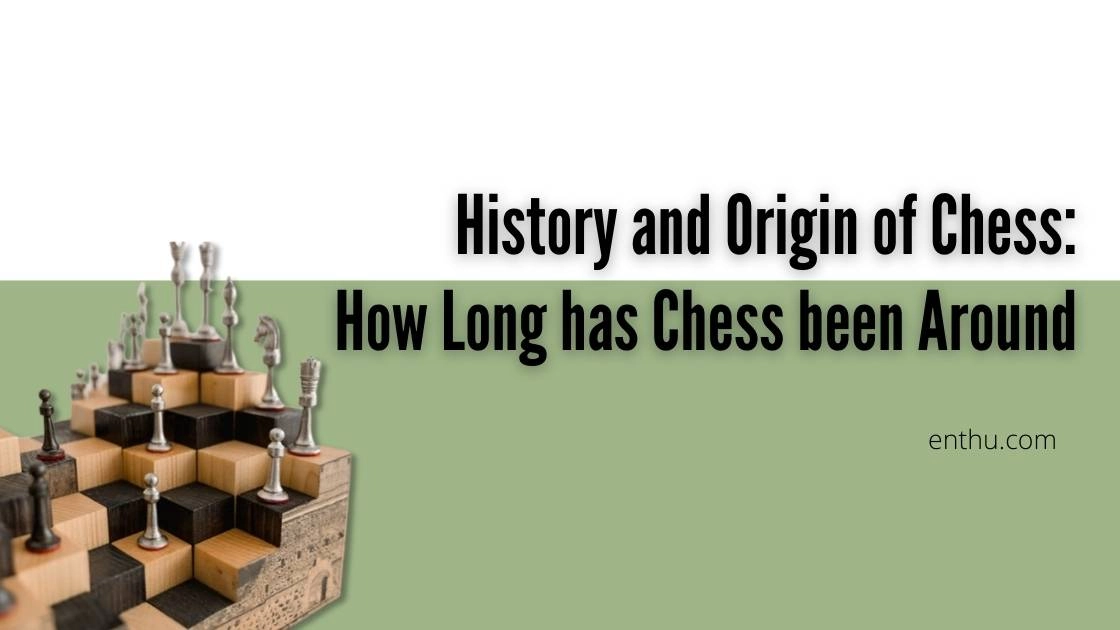
However, this chess piece's name underwent drastic changes over time. Chaturanga players called it aswa, which means horse. Even today, the Knight is referred to as a horse in many languages.
Later, chess represented the power dynamics of the court instead of the battlefield. Therefore, from being a ghoda (horse), it came to be known as a rider or Knight.
Learn How Chaturanga Pieces Evolved into Modern Chess Pieces Checkout "The History of Chess" to learn in detail.
1. How does a Knight Move in Chess?
A Knight moves in L shape

Yep, a knight moves in L shape. Keep in mind that the L can be inverted as well.
In simpler words, a knight can move two squares vertically and one square horizontally, and vice-versa.
Please note that the first two squares can be both horizontal or vertical—either way it has to take another square in the left or right direction. In the below example, the Knight CAN move to e2, f3 and h3 squares.
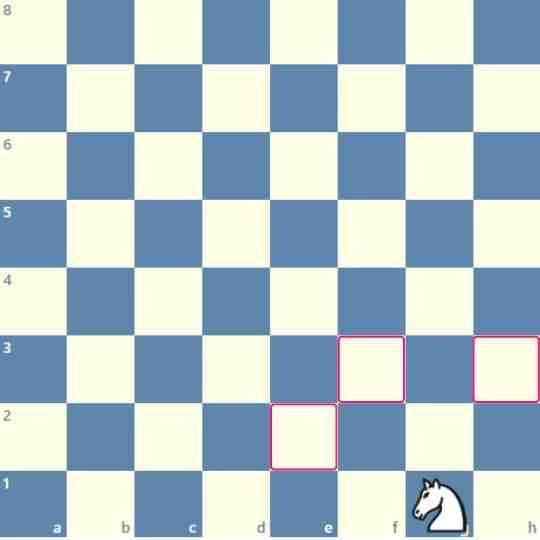
A Knight Can Jump
Over Other Pieces and Pawns Unlike pawns, knight doesn’t have any movement restrictions, and it can go both forward or backward on the chessboard. Everything’s okay till it moves two squares in straight pathways and then takes a left or right.
It can even jump over other pieces and pawns lying on its pathways. For example, in the below image, the white knight at f3 can jump over the knight at f4 when moving to g5.
Also, it can capture the pawn at e5 by jumping over this piece. It’s totally legal and has been that way since always.

A Knight Cannot
Move to the same Square/File A Knight CANNOT move to a square on the same file, rank, or in a diagonal direction. According to FIDE chess rules, “the knight may move to one of the squares nearest to that on which it stands but not on the same rank, file or diagonal.”
A Knight Doesn’t have Special Moving Rules
The king and rook can swap squares during castling. A pawn can become a queen using pawn promotion.
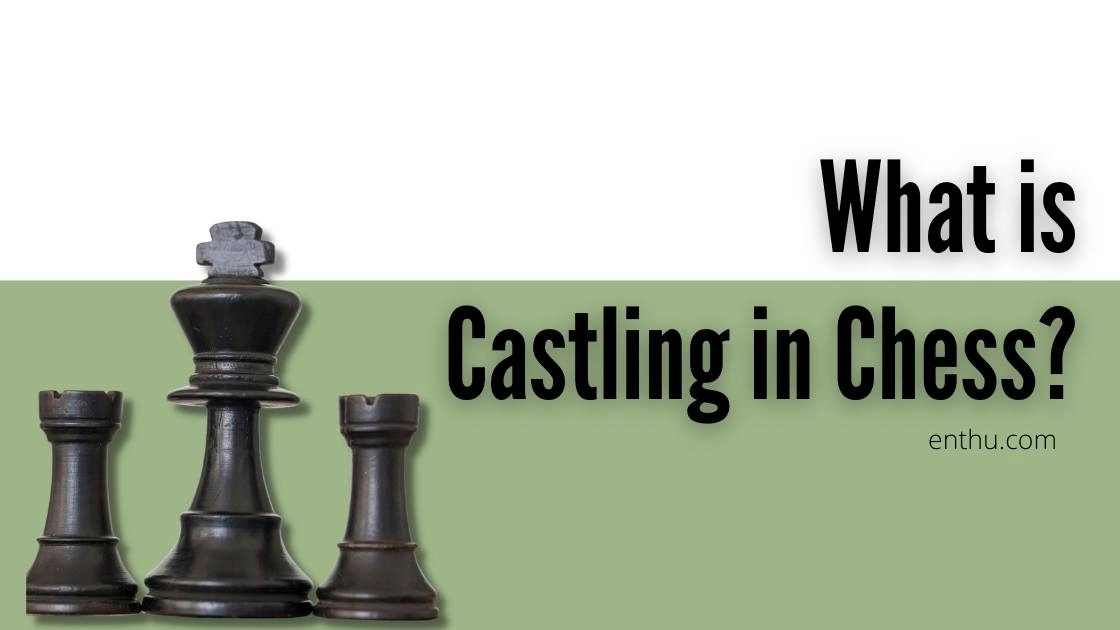
In the game of chess, such special rules add drama and suspense to the game. Unfortunately, a knight doesn’t have such special rules. It moves and captures in the same manner throughout the game.
2. How does a Knight Capture?
A Knight Captures in the Same Manner it Moves A knight captures by moving two squares in straight pathways and then taking a left/right.
The 2-squares-straight pathway can be either horizontal or vertical, followed by another square in its left or right.
So, in the below picture, the black knight at e4 can travel two horizontal squares and a vertical square (by taking a left), and capture the rook at g3. It can also travel two vertical squares, followed by an horizontal square to capture the pawn at d6.

Don’t forget that a knight can’t capture any piece/pawn on the same rank or file or in a diagonal direction. Therefore, even if there’s an enemy piece right next to it, it can’t capture it.
For instance, the black Knight at e4 can’t capture the white knight at e5 or the white pawn at f4.
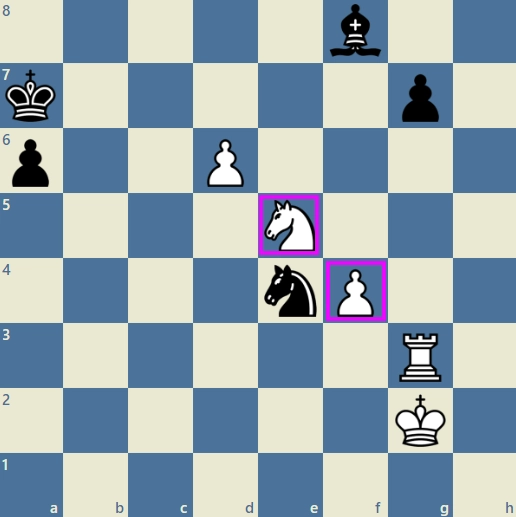
Can a Knight Capture Other Chess pieces?
A Knight can capture any chess piece except the King. Yes, like any other chess pieces and pawns, a knight can also capture all the opponent's piece and pawns, except one. It CANNOT capture the enemy king, just like other chess pieces.
3. Why can’t a Knight Capture the King?
A knight can’t capture or checkmate the king because by doing so it breaks FIDE rules. As per FIDE rules and regulation, no chess piece or pawn can capture the king.
The closest one can go is to CHECK the opponent’s king. Once the king’s under check, the game is over. So, technically a knight can only check the enemy king.
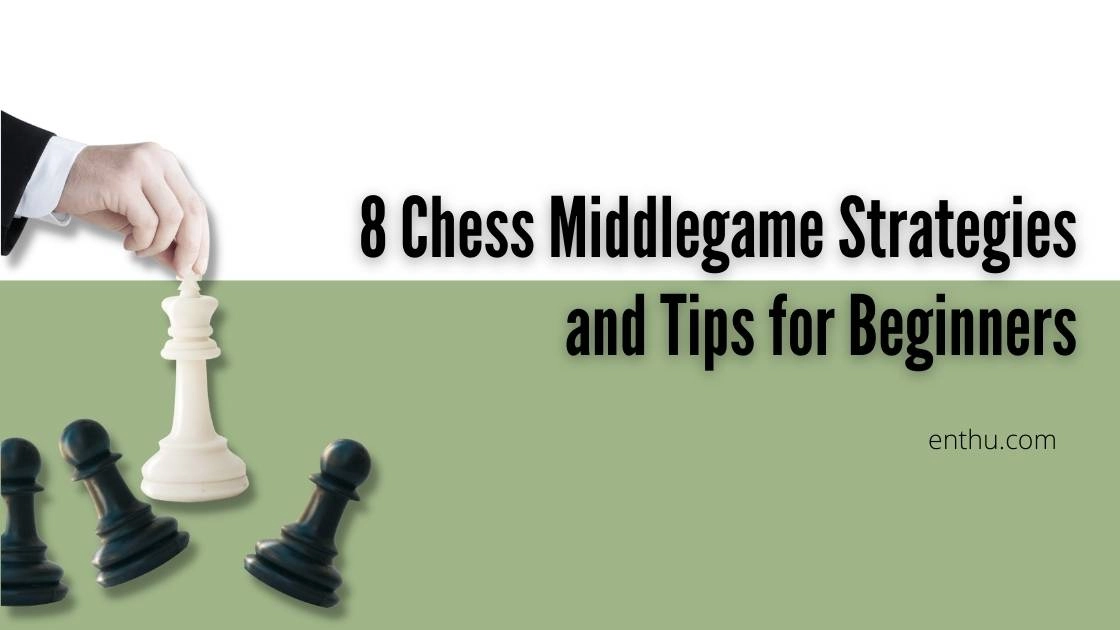
4. Knight Strategies in Chess
The Role of the Knight in Opening Strategies
Use Knights to take the center Knights are the best during the initial phase of the game.
Please don’t keep them at the side of the board; instead, try to bring them out in the center of the board to exert power over enemy pawns.
For example, the King’s Knight opening. Undoubtedly, it’s one of the most played chess openings by beginners, and I will tell you why. The moves are: 1. e4 e5 2. Nf3
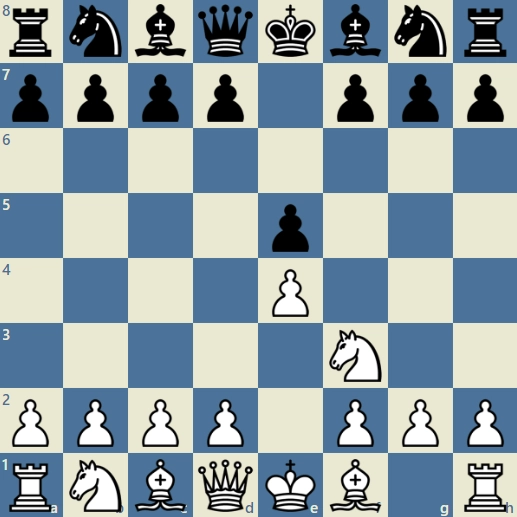
Besides threatening the black pawn at e5, white is also trying to take control of the center by playing Knight in the opening. This boosts confidence in white and helps them build their pieces strategically.
Use knights to capture enemy central pawns
A good pawn structure lays the foundation for the game. You can bring your Knight at the center and use them to capture enemy pawns. If you somehow manage to capture the e and d pawns in the opening, you’re halfway to winning the game.
Don’t use the Knight to protect the king
Always keep the Knight away from your king. It mustn’t be responsible for the king’s safety. Instead, the knights should be out there capturing pieces or threatening. Another reason to play the knights is that you can clear the pathway for castling, by doing so.
How to use a knight in the opening
Use the Knight to take up the central space
Capture or threaten enemy pawns using knights
Bring out the knights to clear pathways for castling
Don’t use the knights to protect the king
The Role of the Knight in the Middlegame
Find Fork to Attack
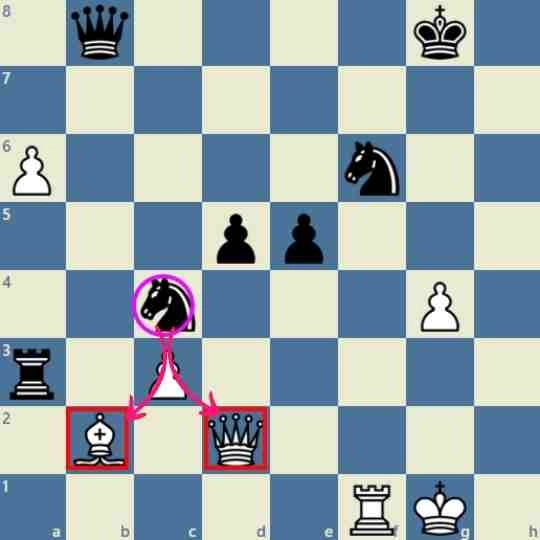
As you read above, the Knight travels in a unique way. It not only travels three squares, but also can jump pieces. Because of this advantage, the Knight is the most eligible piece to execute a fork in chess.
5. What is a Fork in Chess?
A fork is a chess tactic in which a single piece is threatening two or more pieces at the same time. In such situations, the piece that is threatening is called the forking piece, and the threatened/attacked pieces are called the forked pieces.
A middlegame is the best time to execute a fork using the Knight as the forking piece. As in the above example, the black knight at e4 is threatening the white bishop and the queen at the same time.
Outpost the knights to exert power
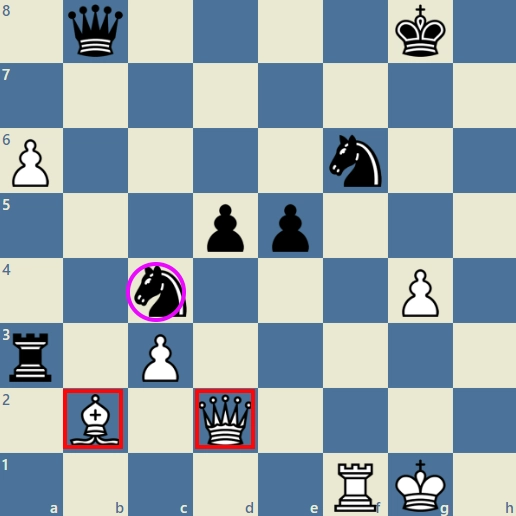
The Knight can also be useful during the middlegame in other ways besides attacking. If you can find proper outposts for your knights, they can keep an eye on the enemy pawns.
6. What is an Outpost in Chess?
An outpost in chess is a square in which a piece isn't directly threatened by the enemy pieces.
But, at the same time, it has access to essential squares in the enemy’s position. The best outposts are guarded by pawns. Find empty spots in the opponent’s pawn-formation to make outposts.
Place your knights in such squares to play a successful middlegame. Take a look at the above image and note how the black knight at c4 is guarded by the pawn at d5.
It's in an outpost, therefore it can protect the black rook at a3 and attack the white bishop and queen at the same time. All from a safe square that isn't directly attacked.
7. The Role of the Knight in Endgame Strategies
Keep the knights away from pawns

Pawns are the worst enemy of knights because a pawn itself is never threatened while attacking the Knight. On top of that, if it’s a rook pawn, then chances are that it will promote itself to a queen and attack the Knight.
Moreover, knights can get trapped on the edge of the board. Therefore, try to keep the knights away from pawns. At the same time, don’t let rook pawns get near to the eighth file.
Use the fortress strategy When you're left with the king and a pawn and Knight, try to build a fortress.
In simpler words, try building a defense strategy that works like a fortress and makes it impossible for the enemy pieces to attack. Use the Knight and a pawn to build a fortress in knight endgames.
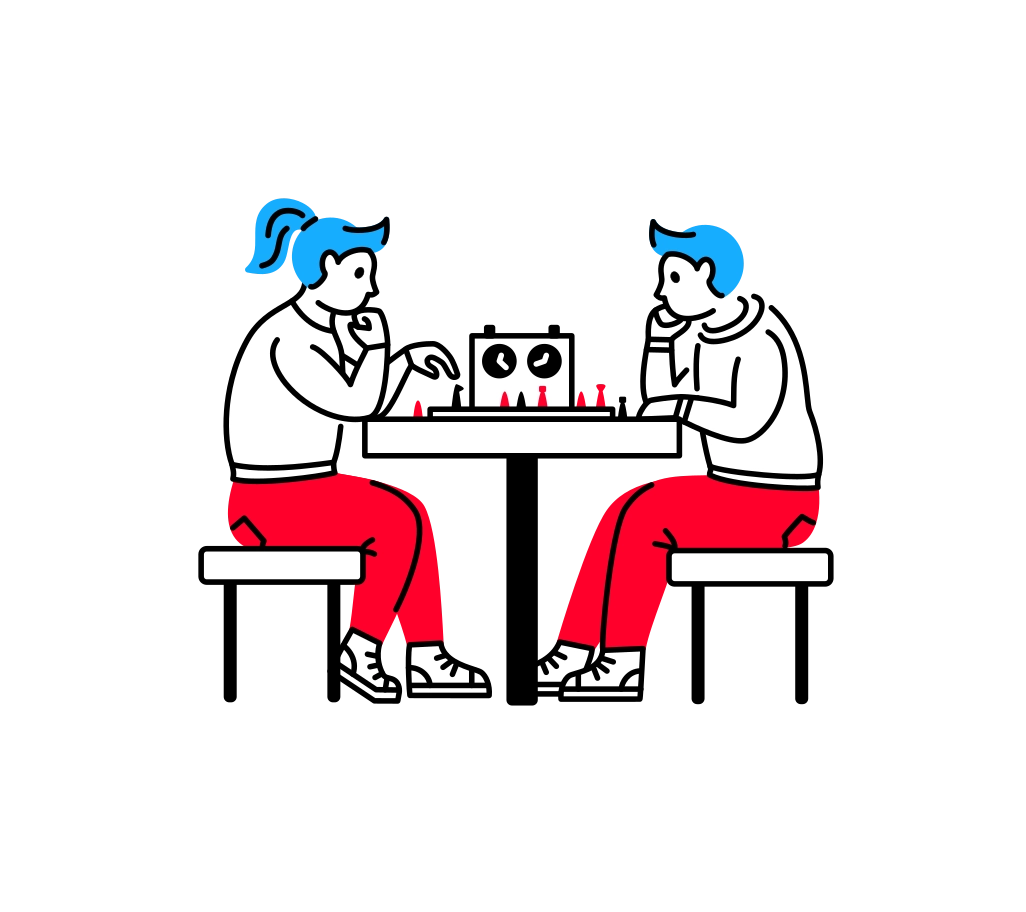

Conclusion
Dear chess players, never underestimate the Knight only because it doesn’t have long reach. Try to use it wisely throughout the game, and implement tactics like knight forks or creating a strong outpost.
Remember, you stand a chance to become a grandmasteronly if you’re smart enough to use all the pieces smartly. All the best for your upcoming tournaments. Until next time!
FAQs
1. What does a knight do in chess?
In the beginning of a chess game, a knight sits between a rook and bishop. It moves two squares horizontally and one square vertically, and vice versa. With its L shaped movement, it can capture pawns and pieces, and check the king.
2. Can a Knight move 1 and then 2?
Yes, a knight can move one square first and then two squares.
3. Are knights better than bishops?
Yes, knights are better than bishops but only during the endgame or at protecting the king. Other than that, knights have their own strength, and if you know tactics like forking and outposting, knights are no less than any chess piece.


Comments